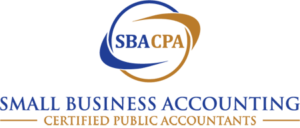Improved Cash Flow
The top challenge for any business — especially growing businesses — is cash flow. When a business fails, there's a good chance — 82% to be exact — that the business had to close its doors due to a cash flow shortage, which left the company unable to cover payroll or fulfill a purchase order. Up-to-date, accurate financial data translates to more precise cash flow forecasting.
What Is Cash Flow?
In order to understand how cash flow affects your business, you have to understand what cash flow is. Your business's cash flow represents the amount of money flowing out of your business and into your business at any given time. Your business's free cash flow equals the total liquid assets (cash) available for use at any given moment in your business.
Cash flow isn't a static number. It changes, just as often as you receive payments and write checks. Cash flow can increase or decrease due to seasonal shifts in your business's revenue and expenses and even due to more frequent cycles within your business, such as pay periods and your sales cycle. As a business grows, it can experience significant cash flow shortages as it attempts to scale. This can easily translate to more money flowing out the business than into it, which means negative cash flow and probable shortages.
Business owners who fail to actively track and forecast their cash flow statements can run into unexpected shortages.
How Does Cash Flow Forecasting Work?
The best way to create a cash flow forecast is with historic financial data. It's essential that you maintain accurate financial records with a solid bookkeeping and accounting system from the beginning of your business.
Cash flow forecasting uses your business's financial data to create an accurate prediction of future cash flow based on a combination of your company's current numbers, past performance, and cash flow cycles. Using a cash flow forecast and certain key performance indicators, you'll be able to more accurately predict your business's future performance using trailing three, six, and twelve-month charts.
How to Use a Cash Flow Forecast
You can use cash flow forecasts to predict your business's cash flow on a monthly, quarterly, and/or annual basis. Whether your forecast shows numbers less than, greater than, or similar to what you expected, you'll be able to plan accordingly. You can devise a strategy that'll help you weather a cash flow shortage, make plans for unexpected revenue, or continue executing your business strategy as originally planned.
If you've predicted a cash flow shortage, you'll know that you're going to need to cut costs or raise additional capital. Common strategies for weathering expected cash flow shortages include taking out a commercial line of credit with your bank or credit union, raising additional investor capital, restructuring your receivables to require up-front payment, or finding ways to cut costs.
If your business has a forecasted excess, you can make data-driven strategies in advance regarding how you will use the cash. Perhaps you'll plan to save it to cover your next expected cash flow shortage, reinvest it in your business, put it toward investor payouts, or use it for another purpose.
How Will Cash Flow Forecasting Help Your Business Succeed?
Business owners most commonly use cash flow forecasting as a prediction and planning tool, but cash flow forecasts can also be used to measure your business's performance. When you create a cash flow forecast, similar to setting a budget for a future period of your business, you can compare the forecast to your actual cash flow numbers. This way, you can see whether your business is on track for the financial period. If not, you'll have time to adjust your operations and upcoming business plans to accommodate for the cash shortage or excess cash accordingly.
With a Virtual CFO, you'll be able to predict and avoid cash shortages, while making operational adjustments to improve cash flow on a daily basis. Although your business is unique and will require a personalized approach, our current clients see significant improvements in their cash flow within the first two months of working with us.
